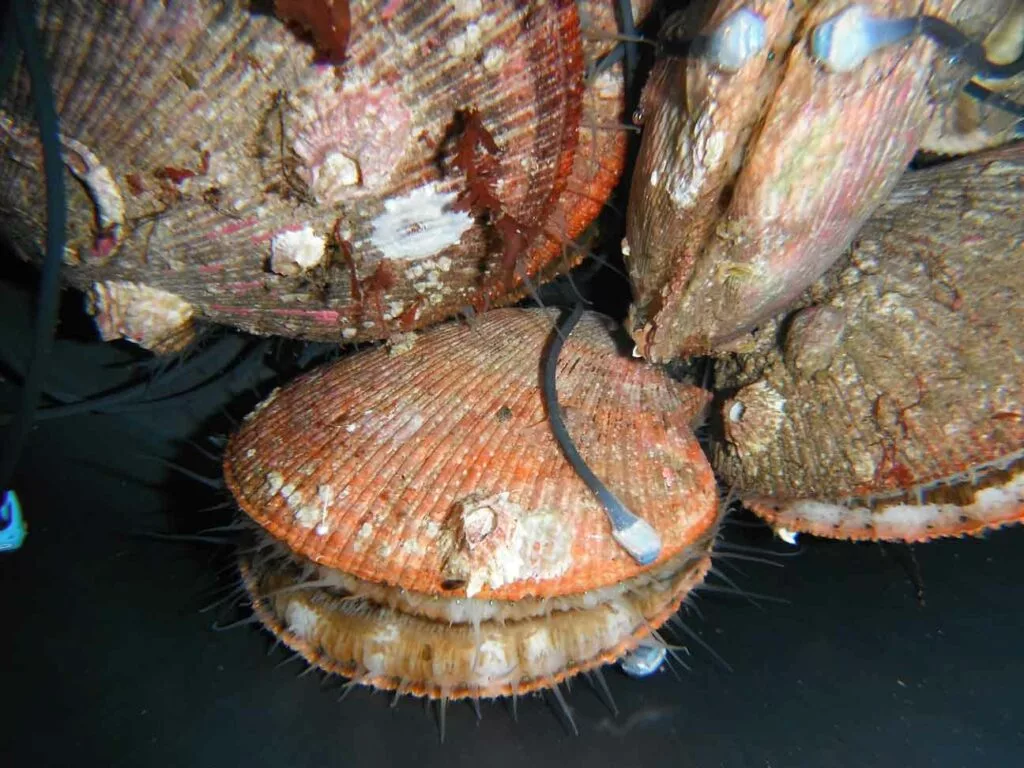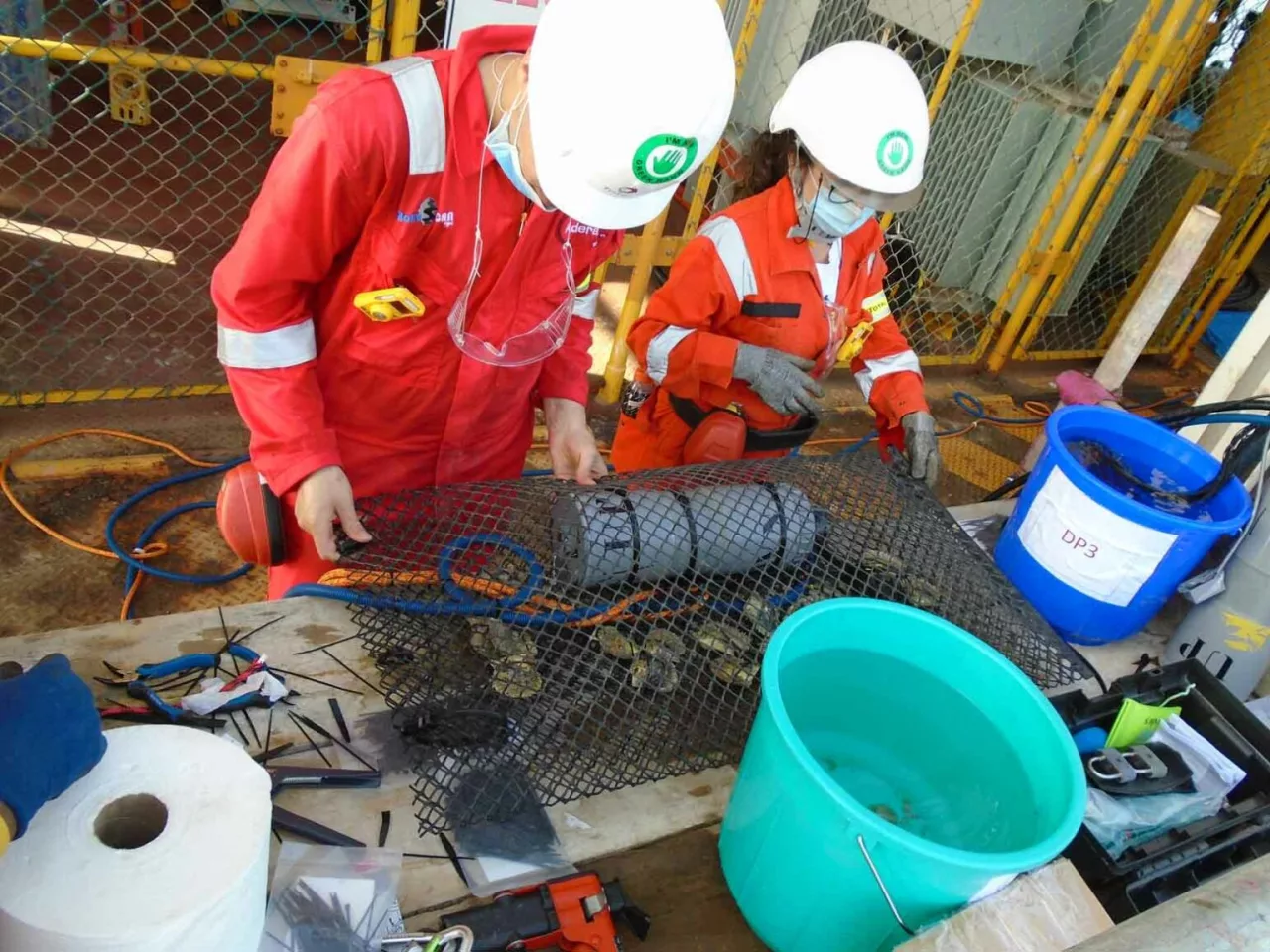Filter-feeding mollusks respond to water pollution in a very detectable and measurable manner. With that fact in mind, scientists have created a commercial water-quality-monitoring system that uses electronically augmented live mollusks as its sensors.
Oysters, mussels, scallops and clams feed by filtering plankton out of the water. And in order to perform that task, they have to open their shells. However, the presence of pollutants in the water affects the manner in which they open. That's where the molluSCAN-eye system comes in.
The technology stems from a 2006 study conducted by scientists from France's Centre National de la Recherche Scientifique (CNRS) and the University of Bordeaux. It has since been commercialized by spinoff company molluSCAN. Here's how it works...
Each molluSCAN-eye unit incorporates a caged cluster of 16 filter-feeding mollusks that are native to the region. It gets placed in the water at the site being monitored. That site could be a shipping port, sewage outlet, oil well platform, or pretty much anything else.
Each of the mollusks has two small electromagnets glued to either side of its shell – one magnet at the edge of one side, and one magnet at the edge of the other, so that they meet when the shell is closed. Therefore, the wider that the shell is opened, the weaker the signal that the magnets receive from one another.

As the animal feeds throughout the day, the electromagnets are thus able to measure factors such as the duration, maximum width, closing speed, and total number of shell openings.
That data is relayed to an adjacent hardwired watertight electronics module, where it's processed by a Linux-based microcomputer. Among other things, the shell-opening behavior is an indicator of the mollusks' biological rhythms, daily growth, egg-laying cycles, daily agitation and other factors which are affected to varying degrees by pollutants.
The processed data is in turn relayed to another cable-connected surface-based module, which transmits it to a cloud-based server. By accessing that server via their smartphone or tablet, clients can see a real-time assessment of the water quality at their location.

According to molluSCAN, the Non-invasive High Frequency Valvometry (HFNI) technology that the system utilizes is 10 to 100 times more sensitive than traditional onsite water quality sensors, plus it's much less expensive. It also requires very little maintenance once installed, as the mollusks continuously clean themselves.
Approximately 90 molluSCAN-eye systems are currently in use by clients located throughout the world. A new-and-improved version of the setup is the recent recipient of a CES 2025 Innovation Award.
Source: molluSCAN






